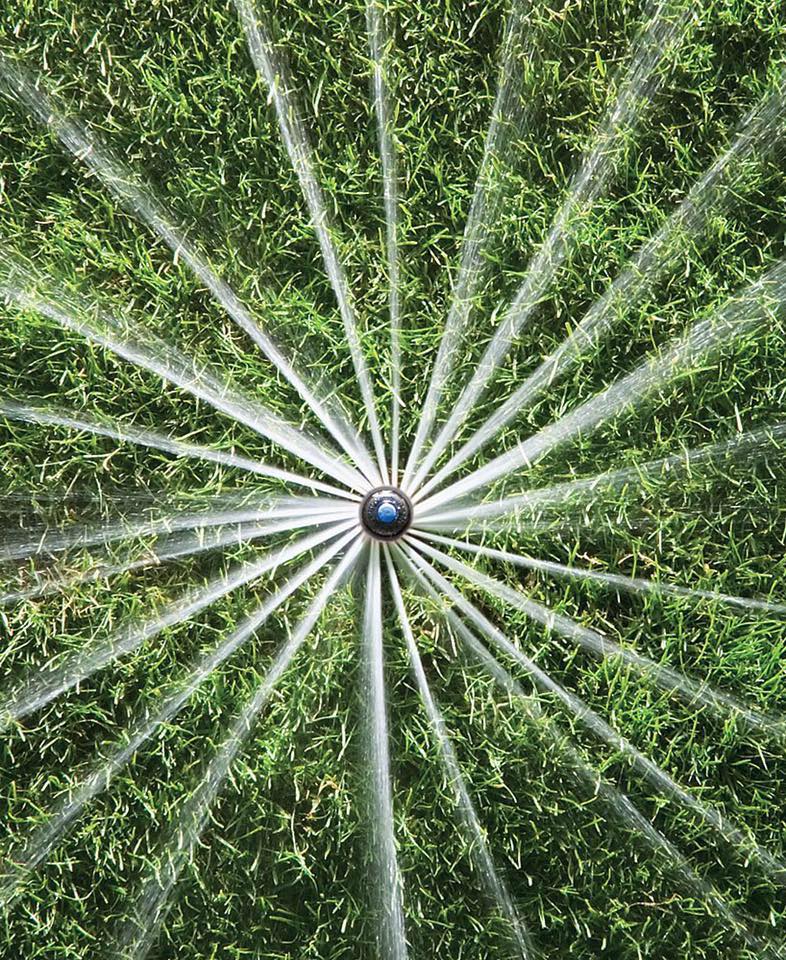Green grass, blooming flowers and full, leafy trees are all signs of a healthy lawn
With proper watering habits you can be sure to enjoy a lush, vibrant yard, and the right sprinklers are the key to your success. With such a wide range of available models, it's important to know which one is ideal for your particular lawn. You'll want to consider a number of factors when choosing a new sprinkler. It may even be necessary to utilize more than one type to ensure that your yard is sufficiently covered. Keeping your lawn healthy and green enhances the look of your home, so consider the following questions as you shop to ensure you're getting maximum watering performance:
• How large is the area that needs to be watered?
• How frequently should you water?
• What type of sprinkler will work best for your yard?
• What is the climate like in your region?
• How can you most effectively water hard-to-reach areas, like gardens?
 •
•  •
•  •
• 
TYPES OF SPRINKLERS
| SPRINKLER TYPE | BENEFITS | IDEAL USAGE |
| FIXED |
• Fast and precise water |
• Small areas |
| IMPACT |
• Wind-resistant |
• Large areas |
| IN-GROUND |
• Automatic operation |
• Front, back, & sides of home |
| OSILLATING |
• Gentle Watering |
• Medium- & large-sized areas |
| ROTATING |
• May feature adjustable jets & bases |
• Medium-sized areas |
| SPRINKLER HOSE |
• Low flow rate |
• Long strips of lawn |
| TRAVELING |
• Cover a wide area |
• Oddly shaped yards |
|
WATERING TIPS While having the right sprinkler will certainly make watering your lawn much easier, there are other steps you'll need to take to ensure maximum effectiveness. Lawns and gardens require much more water when the weather is sunny than they do when it's cloudy, so make sure you're using your sprinklers more frequently on hot summer days. Because grass is composed primarily of water, it is particularly vulnerable in high-heat, low-water conditions. In addition to weather, the type of soil you have will dictate how frequently you need to water. If you're unsure of when to water, look for changes in grass and plants as slow or arrested growth and browning will give you an indication that more moisture is needed. Water your lawn early in the morning so water doesn't evaporate as quickly as it does during the hotter parts of the day and to give grass sufficient time to dry before nightfall. Constant wetness can lead to disease and insect infestatio |
| • Intermittent watering over several hours provides thorough root penetration • Sandy soil needs short, frequent periods of water • Clay soil requires less watering than sandy soil • Loam soil holds water longer than sandy soil but not as long as clay • Watering is unnecessary during periods of heavy rain • Allow soil to dry between watering |






